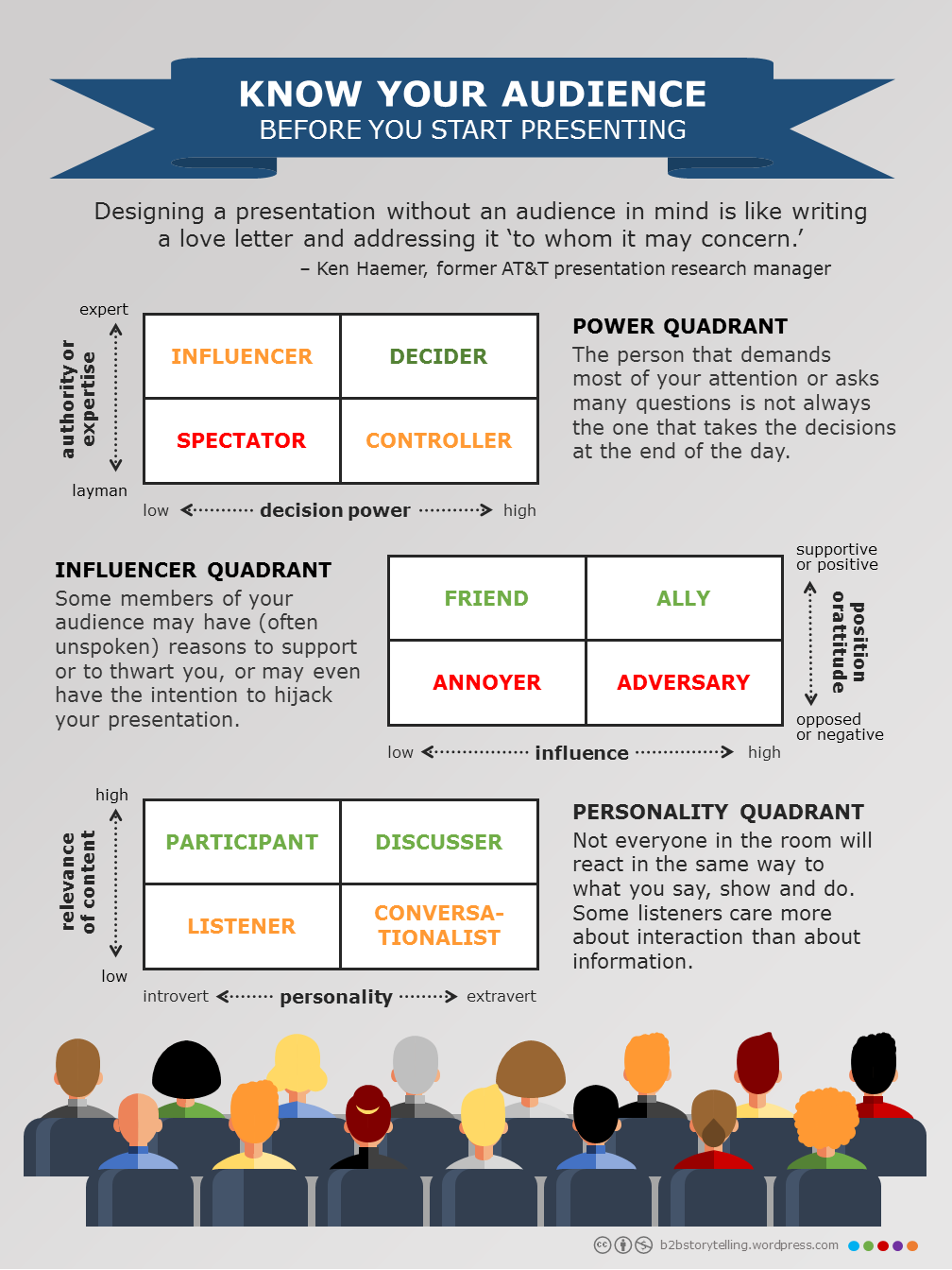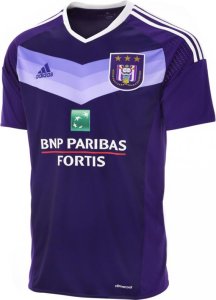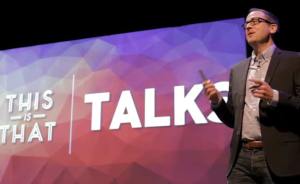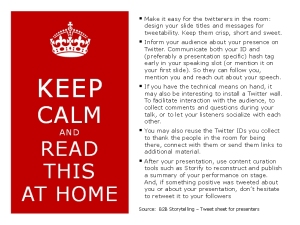This is a compilation post that brings together my views on closely related topics, collating articles that I published earlier on this blog. It doesn’t contain new content, although part of it may have been slightly reworked. Knowing that the whole is often greater than the sum of its parts, I hope this update provides you with a bigger picture, a more complete list of good practices, or a better grounded opinion.
“Designing a presentation without an audience in mind is like writing a love letter and addressing it ‘to whom it may concern.’” – Ken Haemer, former AT&T presentation research manager
Did you ever wonder why the people in the auditorium or meeting room came in to listen to your presentation?
In fact, you should ask yourself that simple question each time again. Because each audience –or even each single member of that audience– may have different and personal reasons for attending:
- “Learn something.” As you, the guy in the front, are assumed to be an expert in your domain.
- “Get the necessary foundation for making a business decision.”
- “Obtain confirmation or recognition from managers or peers in the same room.”
- “Meet with other people in the industry.” At public conferences and seminars.
- “Be entertained – and enjoy a networking cocktail at the end of the day.” Also often the case at public events.
- None of the above. Some people may just “feel obliged to attend.”
As such, it’s extremely important that you have a good knowledge of who is your audience to tailor your presentation to their specific knowledge, needs and expectations.
In the following sections, I will introduce 3 tools, the Power Quadrant, the Influencer Quadrant and the Personality Quadrant, to help you better understand – and thus better address the people you’re dealing with.
The Power Quadrant
In many cases the persons that demand most of your attention or ask many questions are not the ones that are taking the (business) decisions at the end of the day. Power mapping techniques, like drawing a power quadrant, often lead you to a better identification and understanding of the key players in the room.
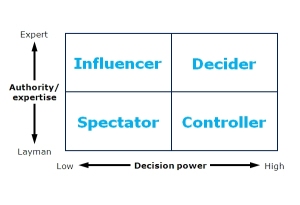
A power quadrant assesses the (e.g. technical or financial) authority or expertise of your listeners vs. the effective decision or execution power they have. A well prepared presenter knows to which category the people in front of him/her belong, and how to deal with the different roles they play.
- Influencers are experts in an advisory role, but don’t have clear decision power. Provide them with the arguments to convince their managers. Go through the details and help them score.
- In many cases, controllers have a final word. As they often don’t have the expertise to grasp all the details of your presentation, just make sure that you win their confidence, trust and support.
- Deciders are the ones who have both the knowledge and the power to close the meeting with a clear “go” or “no go”. Give them all necessary elements for making a decision –here and now!
- And finally, there are also non-contributing spectators. There is no need to pay special attention to them. Just help them make it through the day.
The Influencer Quadrant
Unfortunately, getting decisions made is not only about bringing the people with authority and power on the same page. Some of the members of your audience may have (often unspoken) reasons to support or to thwart you, or may even have the intention to hijack your presentation.
This is where crafting an influencer quadrant often turns out useful.
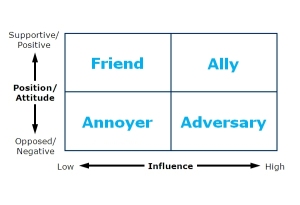
It allows you to proactively identify potential advocates and opponents in the audience, and adapt your attitude, behavior and content accordingly.
- Friends: in an ideal world (which unfortunately does not exist) the room in front of you is filled only with men and women that like or respect you, your products or your company. Give them the opportunity to express their opinion and contribute to a constructive conversation.
- There may be adversaries present too. People who had a bad experience with your company or your products or have been charmed by a competitor. Always be respectful and try to convince them with arguments –hoping they will change their mind.
- Having allies in the audience is even better than having friends. As they combine a positive stance with influencing or decision power, get them involved into the discussion and let them help to prevail upon the others.
- Unfortunately, sometimes there is also this one annoyer in the room whose intention is to spoil the meeting or hijack your presentation. Even if he is nothing but a pain in the… (fill in your favorite three or four-letter word): stay polite. Block him off when you can, but make sure that you don’t lose the support of the other people.
As a conclusion, it’s always good to think about which and why people in the room may be prejudiced, either in a positive or negative way. So make sure you know how to deal with friends and foes, and deal with them appropriately.
The Personality Quadrant
There are many typologies and taxonomies that may help us understand why certain people respond to specific situations the way they do. The dichotomy between introversion and extraversion is one of them. If you to want build a good rapport with your audience and get your message across, you need to understand your speaking/listening partners’ personality, anticipate that they may react differently to what you say, show and do, and adapt your interaction style to their needs.
In the previous sections, I introduced a power quadrant and an influencer quadrant as tools to characterize your audience, and to adapt your content and presentation style to their anticipated behavior. Recently a came across a document that introduces a 3rd –complementary– matrix that takes your listeners’ introversion and extraversion into account.

Introverts care more about information than about interaction. They value exact data, facts and figures to learn, apply and reuse. As they need some time to think before formulating a response, don’t be surprised if they appreciate the handouts of your presentation more than your narrative. You may even consider to provide them upfront with a copy of your slides, so they have ample opportunity to prepare, annotate and digest.
- Listeners: When what’s being presented is either uninteresting or irrelevant for them, introverts may just limit their participation to passive listening. So, make sure you supply them with ample (oral or written) information to take home and share with their management and colleagues.
- Participators: Even when the content is relevant, don’t expect introverted people to be enthusiastic about what you say or to explicitly show their appreciation. Be ready to answer many questions about details – if not during the public presentation itself, probably in a tête-a-tête afterward.
Extraverts tend to think while they speak; they appreciate a good story (which they can retell) and are in for a good conversation. Surprise them, challenge them and acknowledge their thinking with your words and images. Expect them to interrupt your speech from time to time, and prepare for an inspiring discussion after your presentation.
- Discussers: As extroverts tap their energy from interaction with other people, they may (intentionally or unintentionally) hijack your presentation by starting a discussion – with the rest of your audience – about their own vision, project or experience. It’s good to have them in the room, but make sure you stay in control of your speaking slot.
- Conversators: A problem with many extroverted people is that they like to talk about (almost) everything, just for sociability. Don’t allow them to deviate you from your topic – and end up in a “rest room conversation”.
Of course, Introversion vs. Extraversion is not the only dimension of human personality. There are other models, such as the Myers-Briggs Type Indicator or MBTI, that introduce (and combine) other typologies, e.g.:
- How does someone take in information (Sensing vs. iNtuition)
- How does someone make decisions (Thinking vs. Feeling)
- How does someone orient himself/herself to the external world (Judging vs. Perceiving)
By the way, my MBTI personality is E-N-T-P. I invite the readers of this blog to figure out what this means, and how you’d get me warm for your presentation.
(this compilation post has been published earlier on Business2Community and on LinkedIn)
I have also created an infographic that summarizes this post. You may download the file by clicking on the image below (or hitting the download tab on top of this page).
